Recent Posts
Archives
Practice Area
Company Registration Services
Complete CA Services
Popular Resources
Notice for demand under section 156 of the Income Tax Act 1961
Notice for demand under section 156 of the Income Tax Act 1961 may be issued by the Income Tax Department in the following cases:
- Regular Assessement
- Best Judgement Assessement under section 144 of Income Tax Act
- Income Escapement Assessment under Section 147 of Income Tax Act and 148 of Income Tax Act
- Penalty Assessement under section 271(1)(c) of Income Tax Act
- Penalty Assessement under section 270A of Income Tax Act
- Scrutiny Assessement
Income tax Demand notice under section 156 of the income tax act is issued when the Assessing Officer (A.O.) raises demand for any tax, interest, penalty, fine, or any other sum to be payable by you as a result of any order passed under the Income Tax Act.
Notice for sum payable u/s 143(1), 200A (1), 206CB (1) shall be deemed to be Notice of Demand u/s 156 of the income tax act.
The amount you pay under this notice shall be paid within 30 days of receipt. However, the A.O., in some cases if he has a reason to believe that allowing a period of thirty days will be detrimental to the Income Tax Department. with prior approval from the Joint Commissioner of Income Tax (JCIT), can ask you to deposit the amount in less than 30 days.
If any demand for tax, interest, penalty, fine or any other sum is raised by the Assessing Officer as per the provision of Income Tax Act, 1961 then he shall serve a notice of such demand to the assessee u/s 156 specifying the amount payable.
After completing the assessment or re-assessment process, the Income Tax Department takes on the responsibility of determining whether any additional amount needs to be paid by a taxpayer. In case, there is any outstanding liability, the department issues a demand notice under section 156 of the Income Tax Act. This notice specifies the interest, penalties, fines, and any other charges that the taxpayer must pay, along with a time limit for payment.
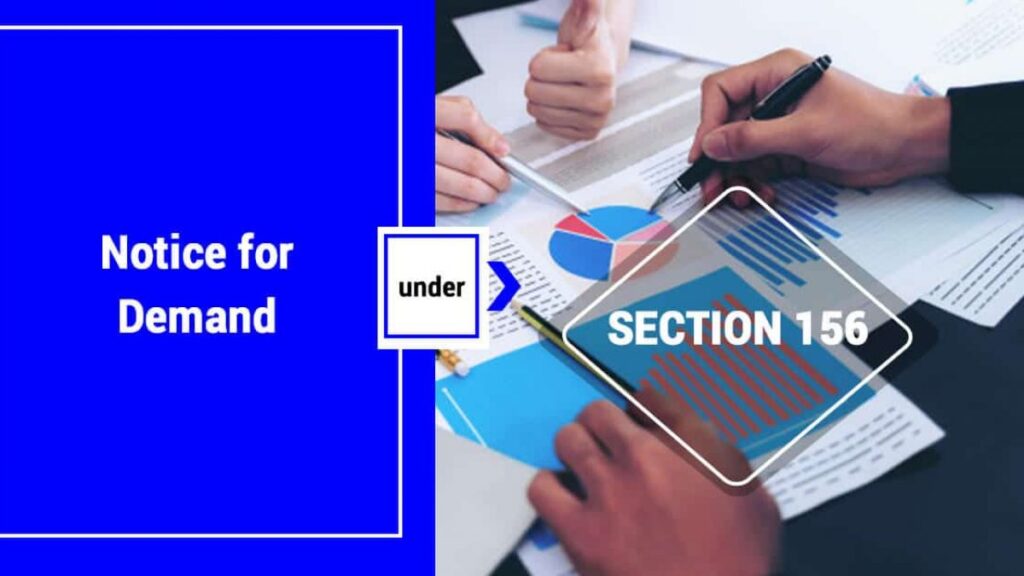
Notice for Outstanding Demand u/s 156?
Notice for income tax demand notice under section 156 of Income Tax act is a notice issued by the Assessing Officer when any tax, interest, penalty, fine, or any other sum is payable by the assessee as a result of any order passed under the Income Tax Act. The notice specifies the amount and the due date of payment, which is usually 30 days from the receipt of the notice.
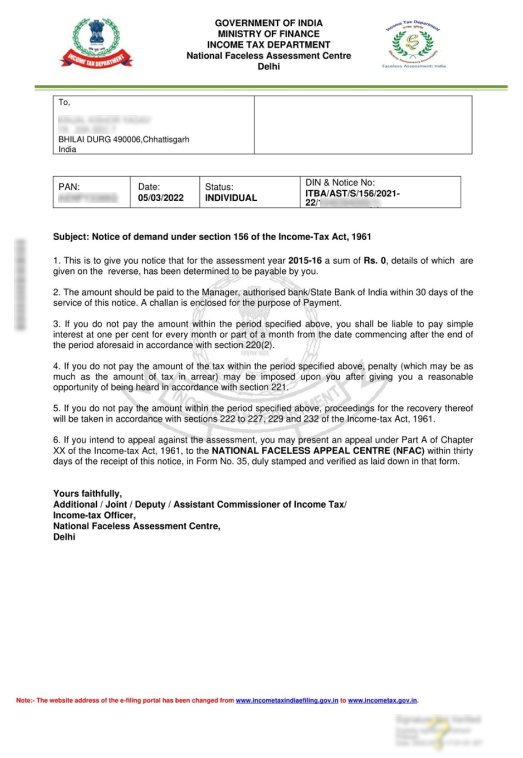
How to Respond to Outstanding Tax Demand Notice?
1.Log in to the e-Filing Portal-Log in to the e-Filing portal. Navigate to Pending Actions > Response to Outstanding Demand to view a list of your outstanding demands from the dashboard.
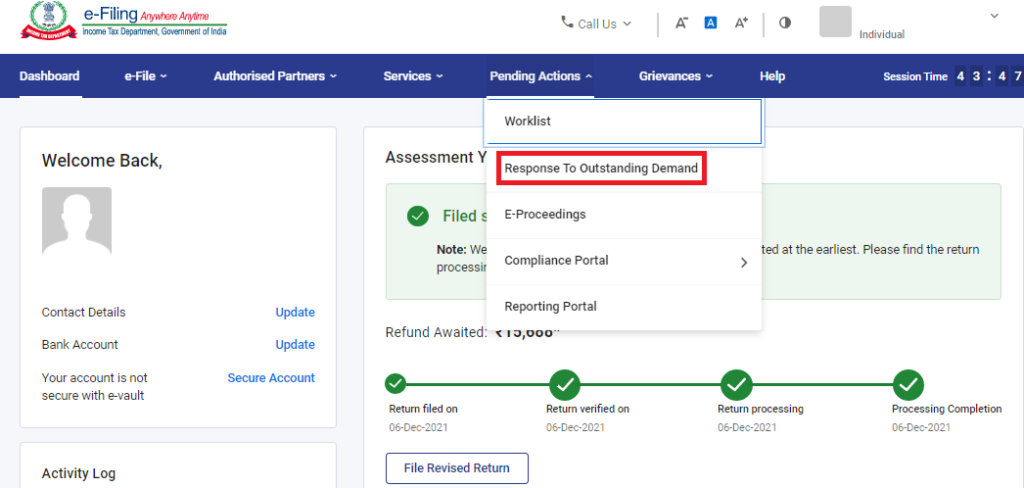
2. If you agree pay the demand amounts before submitting a response-Click on Pay Now to make payment of outstanding demand.
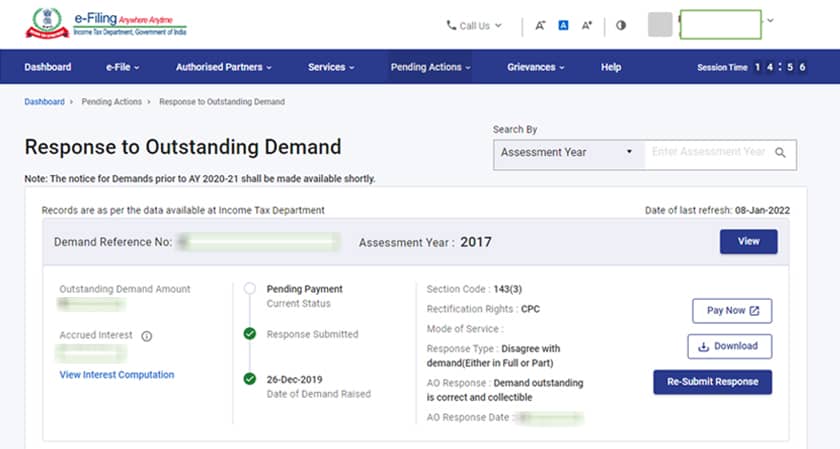
3.Submit Response-If the taxpayer has not paid the demand or disagrees with the demand then they can submit their response accordingly.
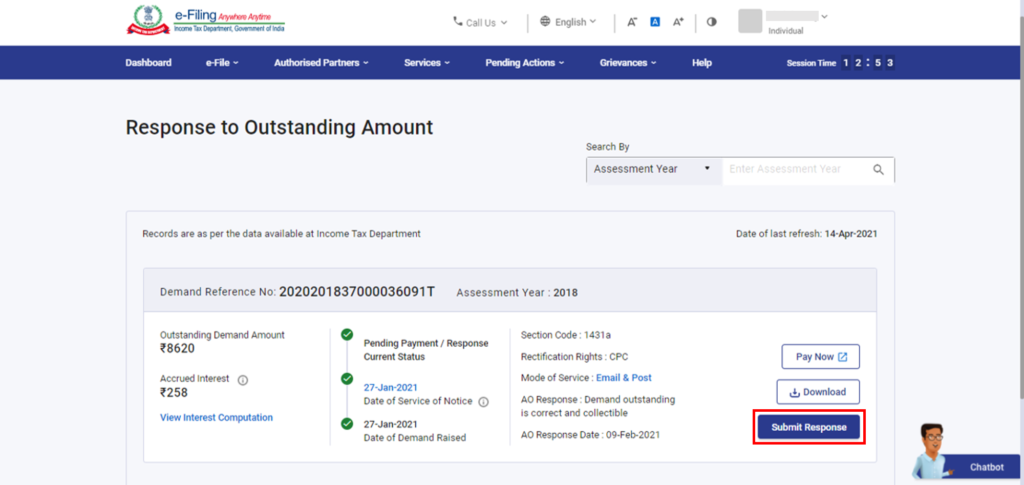
Further, the taxpayer has the following options available for submitting a response to the demand notice issued u/s 156.
- Agree with demand.
- Fully disagree with demand.
- Partially disagree with demand.
Option 1: Agree with Demand
Part A- Demand is correct but payment is pending.
If you agree with the demand notice, you can select the Demand is Correct option. Moreover, you get an opportunity to pay the dues from here only by selecting Not Paid Yet option. Once the payment is done, the response to the demand will be submitted automatically.
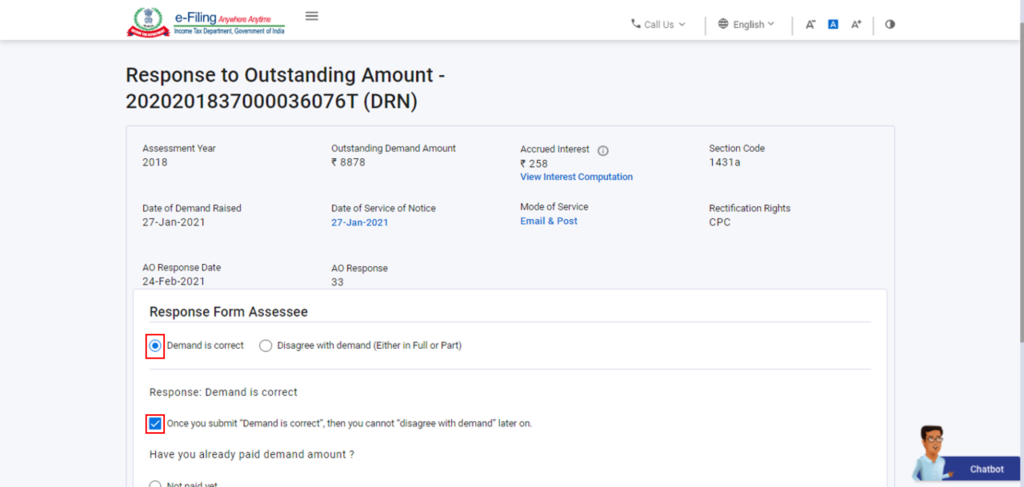
Part B: The demand is correct and amounts are already paid.
On the Response to Outstanding Amount page, select the Demand is Correct option and the disclaimer. Then click on the checkbox with Yes, Already paid and Challan has CIN, and Click on Add Challan Details.
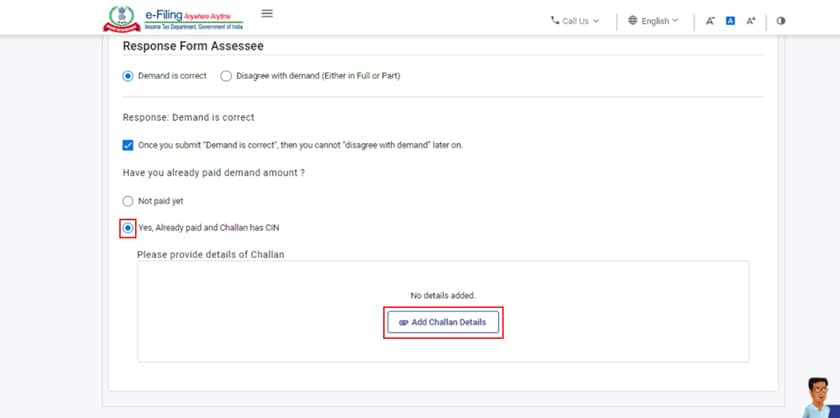
input the challan details. After entering the details, upload a copy of the challan (PDF). Once you save the challan details, the system will display a success message along with the transaction ID on the next tab.
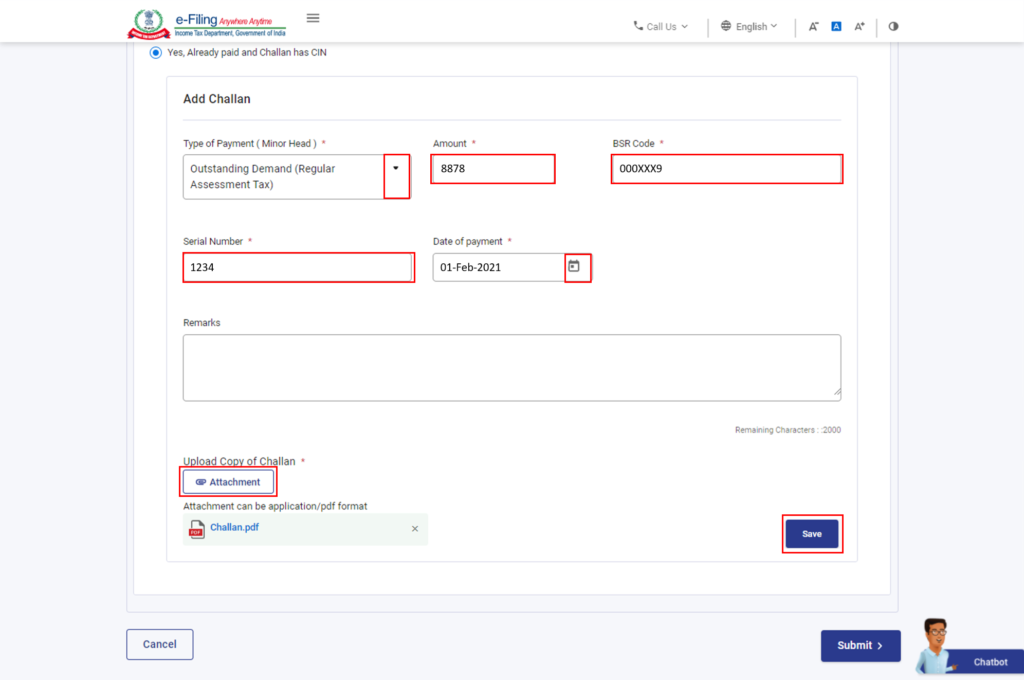
Option 2: Fully Disagree with demand.
If you disagree with the demand notice, select Disagree with the demand (Either in full or in part) option and click on Add Reasons.
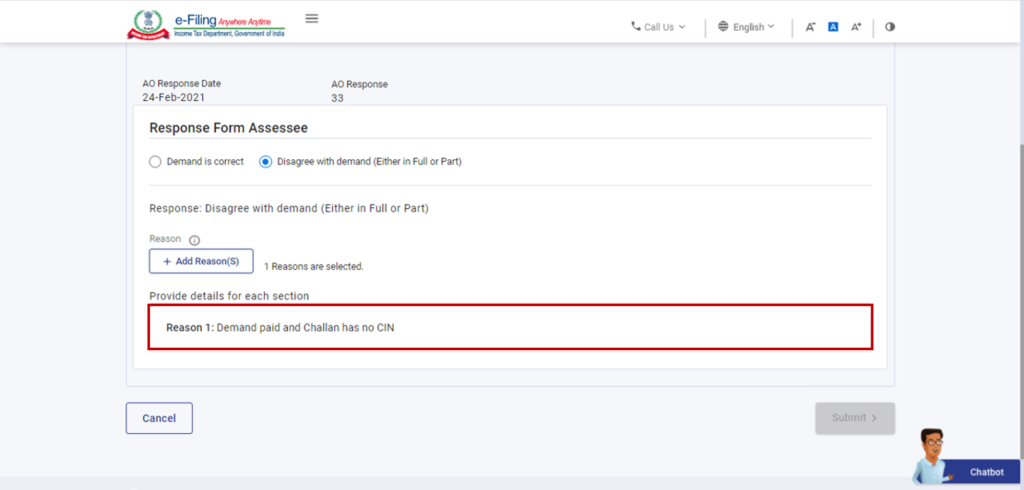
Then, select the reason(s) for your disagreement from the options and click Apply. (You can select one or more options)
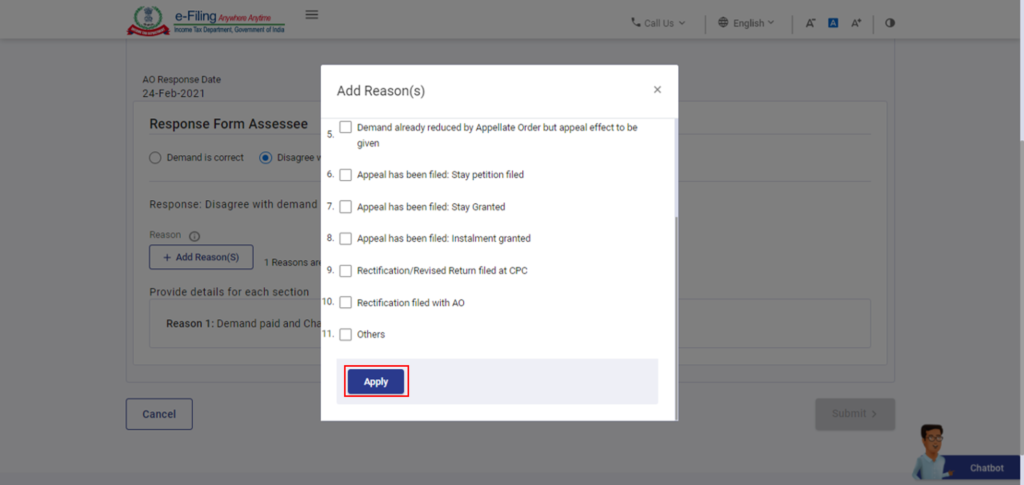
After selecting the appropriate reasons for your disagreement, select each reason you listed on the Response to Outstanding Amount page and enter the appropriate explanation for disagrrement. Once the explanation is saved, submit the response.
Option 3: Partially disagree with Demand.
If taxpayer belives that the outstanding demand is partially correct then they need to submit the reason for disagreement. And for the part of the amount for which the taxpayer agrres they need to make payment.Once the payment is successful, the system will take you to the Response to Outstanding Amount page.In there submit your response. Once the submission is successful, the system will display a success message along with a Transaction ID.
Time limit to respond to the demand
The assessee shall pay the amount of demand within 30 days from the date of service of notice. However, in some exceptional cases, the assessing officer may reduce the thirty-day period with prior approval of the joint commissioner.
An assessee can also apply to the AO to extend the time for payment or allow payment by installment, provided the application should be made before the expiry of thirty days.
Consequences of delay/ Penalty for delay
- Interest u/s 220(2) – Interest at a rate of 1% per month or part of the month will be payable after the expiry of 30 days. Such interest shall be payable by the taxpayer even if the AO has approved the application for an extension of the time period.
- Penalty u/s 221 – AO can impose a penalty up to the amount of demand in the outstanding demand notice. However, the AO has to provide a reasonable opportunity of being heard to the taxpayers. Hence, if the taxpayer proves that the default was for bonafide reasons, no penalty shall be levied.
FAQS
Q.What is the meaning of assessee in default?
If the assessee does not pay the amount specified in the demand notice within 30 days of service of notice then the assessee becomes the assessee in default.
Q.Where can I find my demand notice online?
To download or view the demand notice, you need to log in to the e-filing portal. Once you are in your profile, you can find the demand notice under pending actions > Response to outstanding demand tab.
